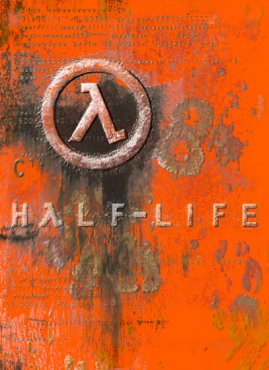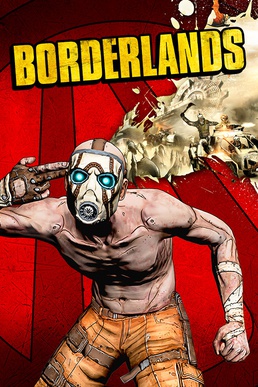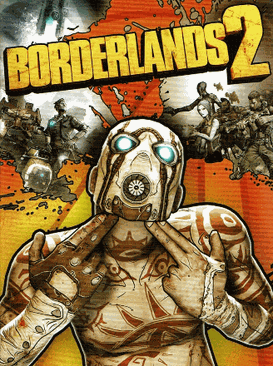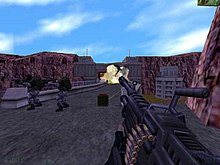
Half-Life is a 1998 first-person shooter game developed by Valve Corporation and published by Sierra Studios for Windows. It was Valve's debut product and the first game in the Half-Life series. The player assumes the role of Gordon Freeman, a scientist who must escape from the Black Mesa Research Facility after it is invaded by aliens following a disastrous scientific experiment. The gameplay consists of combat, exploration and puzzles.

The Black Mesa Research Facility is a fictional underground laboratory complex that serves as the primary setting for the video game Half-Life and its expansions, as well as its unofficial remake, Black Mesa. It also features in the wider Half-Life universe, including the Portal series. Located in the New Mexico desert in a decommissioned Cold War missile site, it is the former employer of Half-Life's theoretical physicist protagonist, Gordon Freeman, and a competitor of Aperture Science. While the facility ostensibly conducts military-industrial research, its secret experiments into teleportation have caused it to make contact with the alien world of Xen, and its scientists covertly study its life-forms and materials. In a catastrophic event known as the "Black Mesa Incident", an "anti-mass spectrometer" experiment conducted on Xen matter causes a Resonance Cascade disaster that allows aliens to invade Earth, and is the catalyst for the events of the series.

Half-Life: Blue Shift is an expansion pack for the first-person shooter video game Half-Life (1998). It was developed by Gearbox Software and published by Sierra On-Line. Blue Shift was the second expansion for Half-Life, originally intended as part of a Dreamcast port of Half-Life. Although the Dreamcast port was cancelled, the Windows version was released as a standalone product on June 12, 2001 for Windows. It was released on Steam on August 24, 2005.

Counter-Strike: Condition Zero is a first-person shooter video game developed by Ritual Entertainment, Turtle Rock Studios, and Valve, and published by Sierra Entertainment and Valve. The follow-up to Counter-Strike (2000), it was released in March 2004 for Windows. Condition Zero utilizes the GoldSrc engine and has a multiplayer mode, which features updated character models, textures, maps and other graphical tweaks. It also includes two single-player campaigns; Tour of Duty and Condition Zero: Deleted Scenes.

The Combine are a fictional multidimensional empire which serve as the primary antagonistic force in the 2004 video game Half-Life 2 and its subsequent episodes developed and published by Valve Corporation. The Combine consist of organic, synthetic, and heavily mechanized elements. They are encountered throughout Half-Life 2, Half-Life 2: Episode One, and Half-Life 2: Episode Two, as well as Half-Life: Alyx, as hostile non-player characters as the player progresses through the games in an effort to overthrow the Combine occupation of Earth.

Half-Life: Decay is a multiplayer-only expansion pack for Valve's first-person shooter Half-Life. Developed by Gearbox Software and published by Sierra On-Line, Decay was released as part of the PlayStation 2 version of Half-Life in 2001. It is the third expansion pack for Half-Life, and like its predecessors, Decay returns to the setting and timeline of the original story, albeit portraying the story from the viewpoint of a different set of protagonists: two scientists working in the Black Mesa Research Facility. Decay is a cooperative multiplayer game, designed to be played by two people working together to pass through the game's levels.

Gearbox Software is an American video game development company based in Frisco, Texas. It was established as a limited liability company in February 1999 by five developers formerly of Rebel Boat Rocker. Randy Pitchford, one of the founders, serves as president and chief executive officer. Gearbox initially created expansions for the Valve game Half-Life, then ported that game and others to console platforms. In 2005, Gearbox launched its first independent set of games, Brothers in Arms, on console and mobile devices. It became their flagship franchise and spun off a comic book series, television documentary, books, and action figures. Their second original game series, Borderlands, commenced in 2009, and by 2015 had sold over 26 million copies. The company also owns the intellectual property of Duke Nukem and Homeworld.

Aliens: Colonial Marines is a 2013 first-person shooter developed by Gearbox Software and published by Sega for PlayStation 3, Windows, and Xbox 360. Based on the Alien universe and set shortly after the events of James Cameron's 1986 film Aliens, the game follows a group of Colonial Marines, a fictional military unit, as they confront the Weyland-Yutani corporation in an effort to rescue survivors from the Sulaco spaceship. The game features a campaign mode that supports both single-player and cooperative gameplay, and a multiplayer mode in which players compete in different scenarios.

Half-Life 2: Episode Two is a 2007 first-person shooter game developed and published by Valve. Following Episode One (2006), it is the second of two shorter episodic games that continue the story of Half-Life 2 (2004). Players control Gordon Freeman, who travels through the mountains surrounding City 17 to a resistance base with his ally Alyx Vance. Like previous games in the series, Episode Two combines shooting, puzzle-solving and narrative elements, but adds expansive environments and less linear sequences.

Half-Life is a series of first-person shooter (FPS) games created by Valve. The games combine shooting combat, puzzles and storytelling.

Borderlands is a 2009 action role-playing first-person shooter video game developed by Gearbox Software and published by 2K. It is the first game in the Borderlands series. The game was released worldwide in October 2009 for the PlayStation 3, Xbox 360 and Microsoft Windows, with a Mac OS X version being released on December 3, 2010 by Feral Interactive. The game's story focuses on a group of four "Vault Hunters", who travel to the distant planet of Pandora to search for the "Vault", which is rumored to contain advanced alien technology and other priceless riches. The hunters piece together clues to find the Vault while battling the savage wildlife of Pandora, local bandits that populate the planet, and ultimately banding together to prevent the Atlas Corporation and its privately funded paramilitary forces from reaching the Vault first.
This is a list of characters in the Half-Life video game series, which comprises Half-Life, Half-Life 2, Half-Life: Alyx, and their respective expansion packs and episodes.

Star Trek: Voyager – Elite Force is a first-person shooter video game developed by Raven Software and published by Activision. The game was originally released on September 15, 2000 for Windows and Mac OS. A port for Mac OS developed by Westlake Interactive and published by Aspyr Media was released on November 20, 2002. Elite Force was ported to the PlayStation 2 by Pipe Dream Interactive and published by Majesco Entertainment on December 11, 2001.

Black Mesa is a 2020 first-person shooter game developed and published by Crowbar Collective. It is a third-party remake of Half-Life (1998) made in the Source game engine. Originally published as a free mod in September 2012, Black Mesa was approved for commercial release by Valve, the developers of Half-Life. The first commercial version was published as an early-access release in May 2015, followed by a full release in March 2020 for Linux and Windows.

GoldSrc, sometimes called the Half-LifeEngine, is a proprietary game engine developed by Valve. At its core, GoldSrc is a heavily modified version of id Software's Quake engine. It made its debut in 1998 with Half-Life and powered future games developed by or with oversight from Valve, including Half-Life's expansions, Day of Defeat and games in the Counter-Strike series.

Borderlands 2 is a 2012 action role-playing first-person shooter video game developed by Gearbox Software and published by 2K. Taking place five years following the events of Borderlands (2009), the game is again set on the planet of Pandora. The story follows a new group of Vault Hunters who must ally with the Crimson Raiders, a resistance group made up of civilian survivors and guerrilla fighters, to defeat the tyrannical Handsome Jack before he can unlock the power of a new Vault. The game features the ability to explore the in-game world and complete main missions and optional side quests, either in offline splitscreen, single-player or online cooperative gameplay. Like its predecessor, the game features a procedurally generated loot system which is capable of generating numerous combinations of weapons and other gear.
Half-Life is a series of first-person shooter games created and published by Valve. Since the release of the original Half-Life for Windows in 1998, several ports, expansion packs and sequels have been canceled, including projects developed by other studios.

Half-Life: Echoes is a modification of the first-person shooter video game Half-Life created by British developer James "MrGnang" Coburn and released on August 10, 2018. The mod was under development for four years and uses the GoldSrc engine.

Hunt Down the Freeman is a 2018 first-person shooter video game developed and published by indie developer Royal Rudius Entertainment through the Steam distribution platform. It is a fangame of the Half-Life series by Valve Corporation, and follows U.S. Marine Mitchell Shephard through several major events in the series' canon as he attempts to find and kill Gordon Freeman.


















